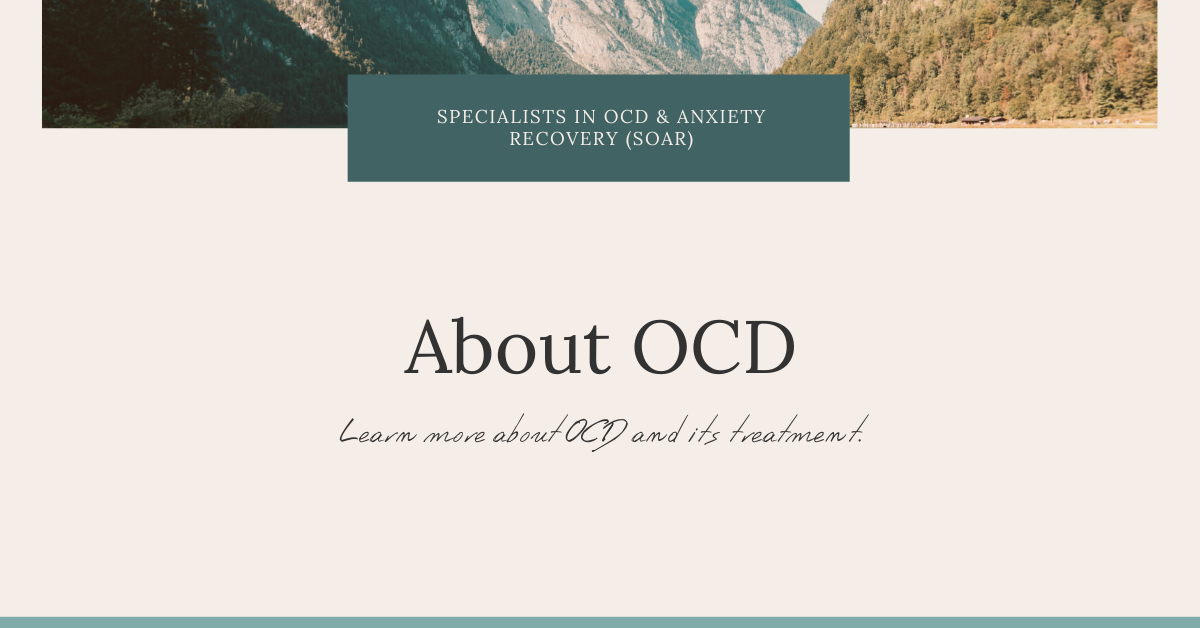Obsessive Compulsive Disorder (OCD) is a mental health disorder that can affect anyone regardless of ethnicity, age, or gender. It is often misunderstood due to the inappropriate over-use of the term “OCD” in society (for example, a highly organized person might say: “I’m so OCD about keeping my things organized”). OCD is not about having exceptional organizational skills and having OCD is not a quirky character flaw. OCD is a serious highly distressing disorder that seriously and adversely affects the lives of those who have it and, oftentimes, the people who are close to the sufferer.
OCD has two main components: obsessions and compulsions.
Obsessions are “unwanted, intrusive thoughts, images, or urges that trigger intensely distressing feelings” [1]. Oftentimes the uncomfortable feeling is fear or terror, but it can also be disgust or simply a “not right” feeling. It is important to note that not all obsessive thoughts are an indicator of OCD. Obsessive thoughts are associated with other disorders, such as drug or behavioral addiction, eating disorders, and personality disorders. Non-clinically, the word “obsession” often refers to a strong interest or attraction, which is quite the opposite of it’s meaning in the context of OCD.
Compulsions are repeated behaviors or mental acts an individual performs in an attempt to escape, minimize, or avoid the obsessions and/or the associated distress [1].
Obsessions, or intrusive thoughts, come into one’s mind naturally, without the individual intending to have that thought. It’s important to note that virtually everyone experiences an unwanted, intrusive thought on occasion. The difference between someone with OCD and someone without OCD is that the person without OCD is able to become aware of the thought, consider it only briefly, and let it go. The person without OCD may be alarmed or even horrified by the thought, but can ultimately understand it is an unwanted thought, differentiate the thought from their own desires, and turn their attention to other things. The person with OCD, however, reacts by engaging in mental and behavioral compulsions in order to understand the thought (and therefore gain a sense of mastery or control) and to reduce distress associated with the thought.
It is actually the compulsive thinking (i.e., rumination or mental rituals) and compulsive behavior (i.e., repeated acts or behaviors performed in attempt to escape or avoid discomfort) that “feeds” OCD and makes it so much worse. Ironically, the more a person actively tries NOT to think about something, the more difficult it is to stop or avoid thinking about it. In addition, the more a person tries to avoid or escape unwanted feelings by doing compulsions, the more a person believes they need to continue these compulsions (and do more and more of them) in order to feel okay.
As child therapist Natasha Daniels states:
“Our brains are like gears. They’re always moving our thoughts and our behaviors along… When you have OCD your brain gears get stuck so all of those thoughts that are upsetting….continue to grow and get bigger in your brain and in your awareness.” [2]
References:
[1] What is OCD? (n.d.). International OCD Foundation. Retrieved January 13, 2021, from https://iocdf.org/about-ocd/
[2] Natasha Daniels. (2017, July 13). What is OCD? Explaining Child OCD to Kids [Video]. YouTube. https://www.youtube.com/watch?v=J1kjw0kmMds&list=PLPqeklypAExtiGgccK3mStL041TpGMQxK&index=1

